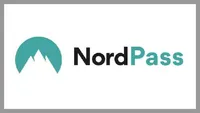
Passwords are an everyday essential if you’re using any kind of computing device. From laptops to desktop machines and through to tablets and smartphones, they all make use of passwords. That’s for good reason too, because passwords are your main way of keeping your computing equipment safe and secure from cybercriminals, hackers and malicious software. Demand for strong passwords is growing too now that we all have so many accounts online.
It’s therefore vital to ensure that you have strong passwords in your computing arsenal because this is the best way of defending your devices and, more importantly, your personal data. Having a strong password is the barrier to fending off many net-based nasties, but it is also quite a dynamic thing, in that it is best practice to change any passwords you have on a regular basis.
Hackers, cybercriminals and other malicious computer villains out there are modifying their practices all the time, hoping to sidestep the companies who offer preventative cyber-fraud software, including anti-hacking and anti-virus packages. So, it’s a very good idea to get organized when it comes to having strong passwords.
If you’re a little bit lackadaisical when it comes to choosing and changing a strong password collection it might be time to think about software that can help you take control of them more efficiently, like a password manager for example.
NordPass is a Techradar top-rated Password Manager Protecting your passwords is extremely important, and NordPass provides an accessible, competent, easy-to-use solution. Get NordPass Premium for two years at 33% off—only for $1.49 per month.
What’s the problem?
A weak password can compromise the security of your computing equipment or give criminals easy access to personal data you might have stored online. This could mean cybercriminals might be able to access internet accounts, from not-so-sensitive things like social media profiles right on through to very sensitive locations, such as online bank accounts or your tax and social security information.
If you’ve every suffered the anguish and stress of being a victim of data theft you’ll know that once the damage is done it can take a long time to pick up all the pieces. A strong password, or collection of them if you have multiple offline and online accounts, is a vital part of the puzzle when it comes to keeping cybercriminals at bay. Hackers have all sorts of tricks up their sleeves in order to try and compromise your accounts, which can include automated dictionary-based hacks, pulling easily found data from social media accounts or even less sophisticated brute-force attacks that can frequently be successful in cracking more obvious or simple passwords.
You also have to be on the lookout for phishing attempts via email, texts or phone calls. Similarly, it might be that you could end up a victim of a data breach, where a company you’ve dealt with might have become the victim of a hacking attempt.
Sign up to the TechRadar Pro newsletter to get all the top news, opinion, features and guidance your business needs to succeed!
How to create a strong password
Central to all this is creating a strong password, which will hopefully fend off any attempts to crack it. On top of that, changing even the strongest password regularly is another way to reduce your risk from cybercriminals. Thankfully, some quick and easy ways of checking if you’ve got the right formula might reduce the threat somewhat.
There are some obvious things to consider, such as not having a password that’s easy to guess, like sequential collections of numbers or selections from your keyboard. Think about password length – anything over 10 characters long is a good idea, longer if you prefer. Another great way of mixing things up is to vary the character types, so upper and lower case, symbols and so on can all help to make a strong password even more impenetrable.
Smart thinking helps
Remember that hackers are well versed when it comes to getting into the minds of people creating their passwords. Character substitutes, where you replace a letter with a number, such as a ‘!’ instead of a 1, or a ‘0’ in place of an ‘O’ might seem like a good idea, but be wary as cybercriminals have software that can cover this scenario too.
Try to think of a combination that’s going to be difficult for a computer to guess, but at the same time, make sure you have a system in place so you can remember it too. Otherwise, you might end up being locked out of an account, which can open up another series of hurdles to sort out.
Simple but effective
It’s well worth taking the time to create a strong new password and getting one that’s going to be good invariably falls into one of two different routines. You can produce a strong password using a passphrase, which is usually much easier to remember. This is because it blends lots of different real words and blends them with random characters. With practice, you can often come up with something that’s rings a bell in your head, making it easier to remember, but the passphrase setup still makes it a hard password to crack.
The other route to take is the random character string, which is a password created from a completely random selection and mix of character types. The great thing about this is that they can be very hard to guess and similarly challenging to hack. One potential downside is that a random character string can be difficult to remember yourself, but it can be done with a little bit of practice.
Remembering your strong password
Taking the above on board might present you with a new problem in that remembering your strong password might be a challenge. It’s important not to write down passwords, or save them in obvious places including laptop text files or phone note applications. Lots of browsers frequently offer to save your password for easier sign-in to accounts too, but this isn't a great idea either, for obvious reasons.
Also consider setting up two-factor authentication for accounts, especially those that allow you to carry out online banking, pay bills or relate to accounting or tax affairs. In addition, try and come up with a formula that means you’ll change all of your most sensitive passwords on a regular basis and don't just alter the odd character either. Ideally, you’ll want to start with a completely fresh password combination.
Get a password manager
One of the best ways to do all this is to enlist the services of a password manager, which is a software program that can not only generate secure passwords, but keeps all of the data encrypted too. Many of the better examples, as in paid-for ones as opposed to the free or freemium types, will also tell you just how good the password is and advise if it looks like it could be easily compromised.
You’ll still need to remember one main password to get into the password manager itself, but the benefits if you have multiple log-in locations and passwords to keep tabs on are obvious. It could be money well spent.
Rob Clymo has been a tech journalist for more years than he can actually remember, having started out in the wacky world of print magazines before discovering the power of the internet. Since he's been all-digital he has run the Innovation channel during a few years at Microsoft as well as turning out regular news, reviews, features and other content for the likes of TechRadar, TechRadar Pro, Tom's Guide, Fit&Well, Gizmodo, Shortlist, Automotive Interiors World, Automotive Testing Technology International, Future of Transportation and Electric & Hybrid Vehicle Technology International. In the rare moments he's not working he's usually out and about on one of numerous e-bikes in his collection.

